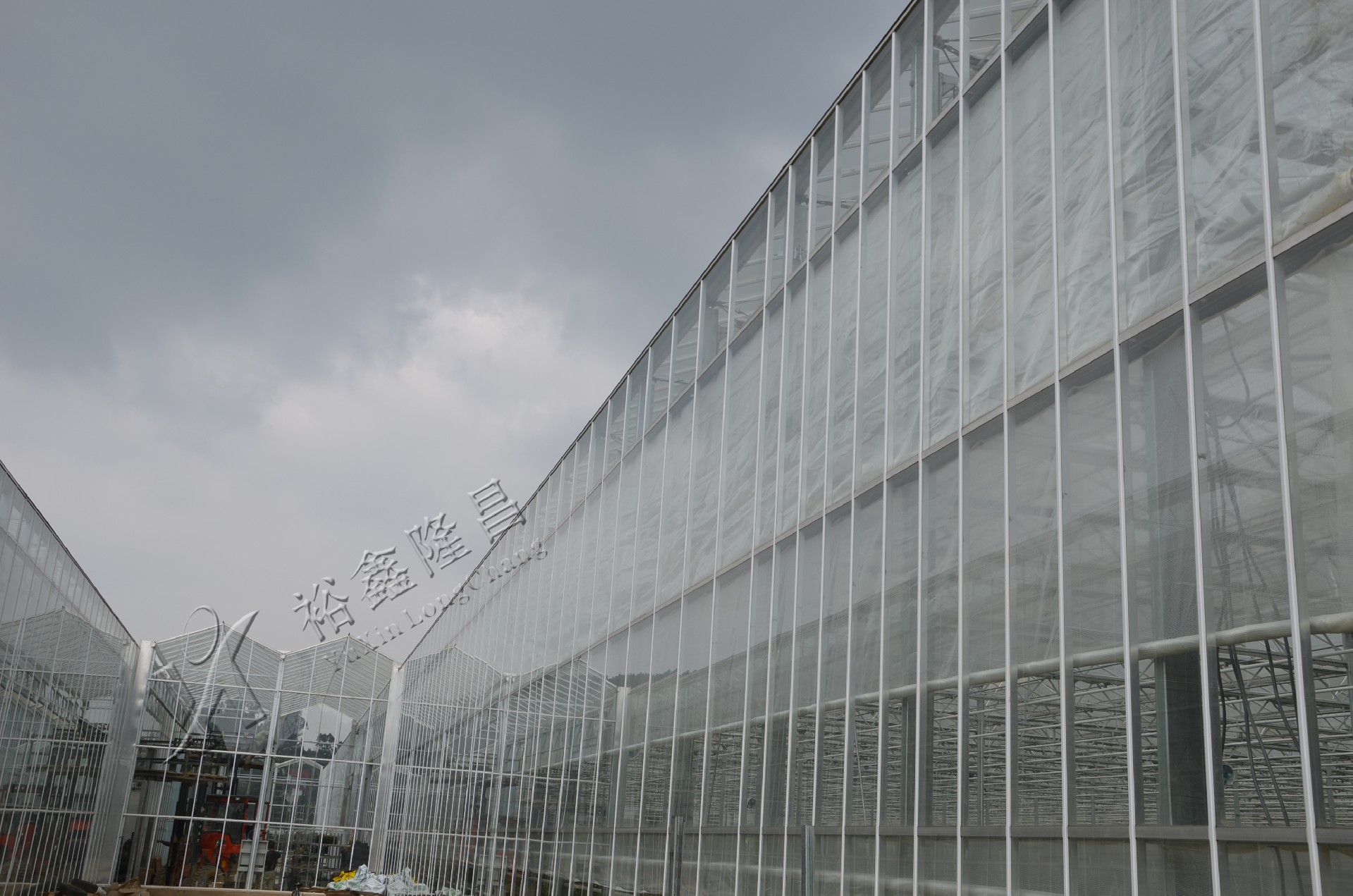
How to protect glass greenhouses in extreme rain and snow weather
In recent years, natural disasters have occurred frequently around the world, and the frequency of extreme weather phenomena has increased. As the northern hemisphere enters winter, many glass greenhouses will be damaged by heavy snowfall or egg-sized hail, causing severe damage.
How can glass greenhouses avoid crop yield losses due to heavy snow or hail in such extreme weather? Our suggestion is to take the following measures:
Glass greenhouse: Glass greenhouse is the most expensive among agricultural greenhouses. The investment in ceiling glass accounts for about 5% of the entire greenhouse. Qualified 4mm or 5mm tempered scattering glass can withstand the impact of severe weather such as snowstorms and hail. If an extremely large hail attack causes the glass to break, tempered glass can also be split into enough glass fragments with rounded edges. This can ensure the safety of workers and plants to the greatest extent. Therefore, be sure to purchase tempered scattering glass for a greenhouse. Ask the supplier to provide quality inspection reports, and do not choose substandard or low-standard greenhouse tempered scattering glass just because it is cheap.

In addition, in the face of such cold weather, we can also take the following measures:
1. Clear snow in time: Snow is easy to accumulate on the top and around the glass greenhouse and needs to be cleared in time to prevent the snow from crushing the greenhouse.
2. Strengthen thermal insulation measures: For non-heated glass greenhouses, temporary heating equipment can be used in snowy weather, such as hot air fans, hot air stoves, or other heating measures to increase the temperature, but be very careful about toxic substances. Material precautions.
3. Pay attention to ventilation: Although the temperature is low on snowy days, you must also pay attention to ventilation to avoid excessive humidity in the shed, which may cause diseases.
4. Do a good job in drainage work: Snowy days can easily cause water accumulation in the shed, so drainage work needs to be done to avoid the impact of water accumulation on crop growth.
5. Strengthen inspections: Snowy days are prone to severe weather such as strong winds and cooling, so inspections need to be strengthened to discover and deal with problems in a timely manner.

In short, the work of glass greenhouses in cold weather requires attention to clearing snow, strengthening insulation, paying attention to ventilation, drainage, and strengthening inspections to ensure the normal growth of crops.
Tags:anti-reflective glass diffuse glass agricultural greenhouses glass greenhouse venlo greenhouse AR glass greenhouses glass agricultural glass horticultural glass #greenhouseglass #Antireflectiveglass #Diffusetemperedglass #Ultrawhitefloatglass #agriculturalgreenhouseglass #diffuseglass #horticulturalglass #Tomatogreenhouse #Coloredpeppergreenhouse #Lettucegreenhouse #Agriculturalgreenhouse #ARglass #venlogreenhouse #greenhouseglass #Antireflectiveglass #Diffusetemperedglass #Ultrawhitefloatglass #agriculturalgreenhouseglass #diffuseglass #horticulturalglass #Tomatogreenhouse #Coloredpeppergreenhouse #Lettucegreenhouse #Agriculturalgreenhouse #ARglass #venlogreenhouse #GlassManufacturer #invernadero #ArchitecturalGlass #ClearFloatGlass #FloatGlass
Previous:Four major uses of diffused glass for glass greenhouses
Next:What are the benefits of diffused glass for greenhouse crops?



















